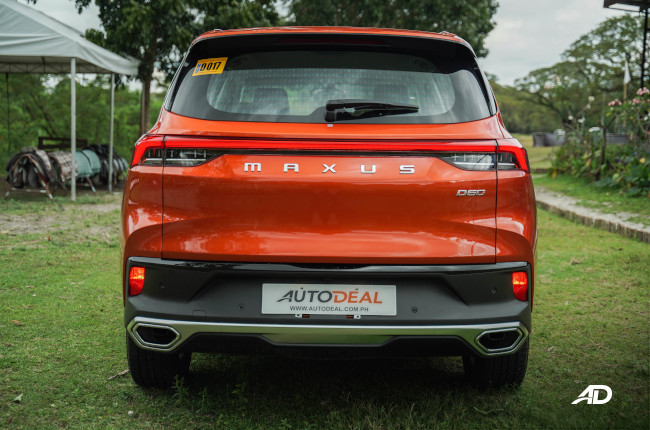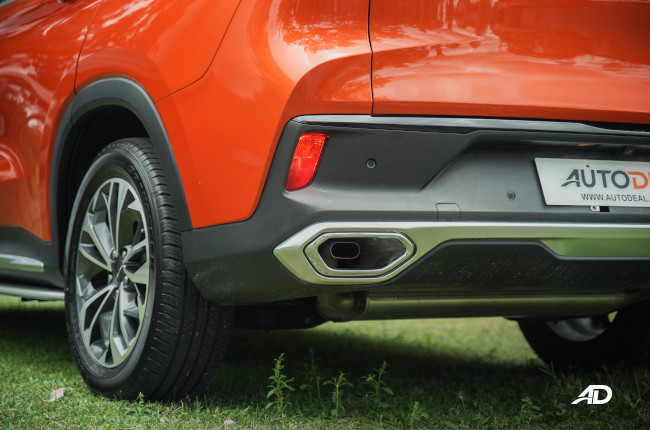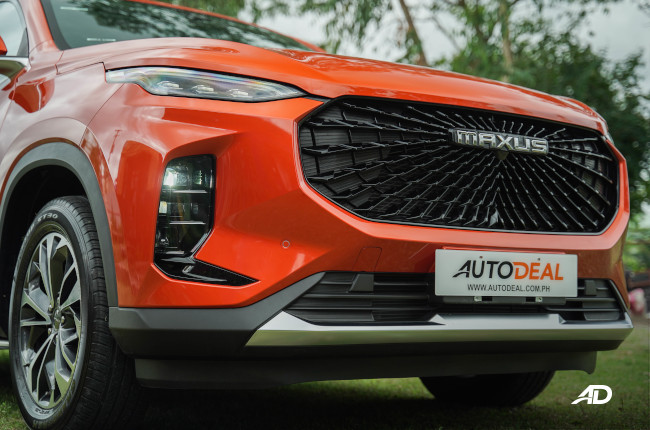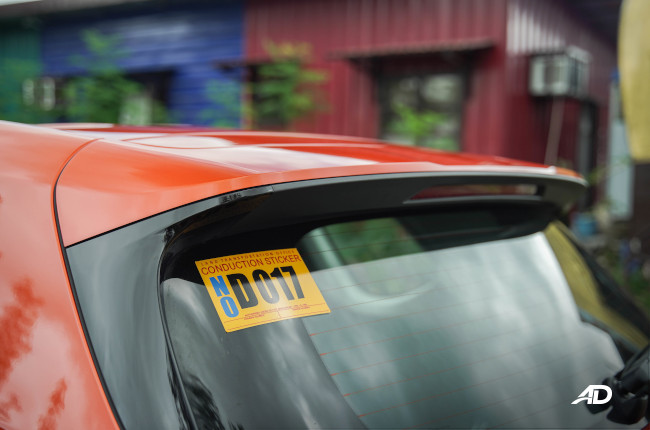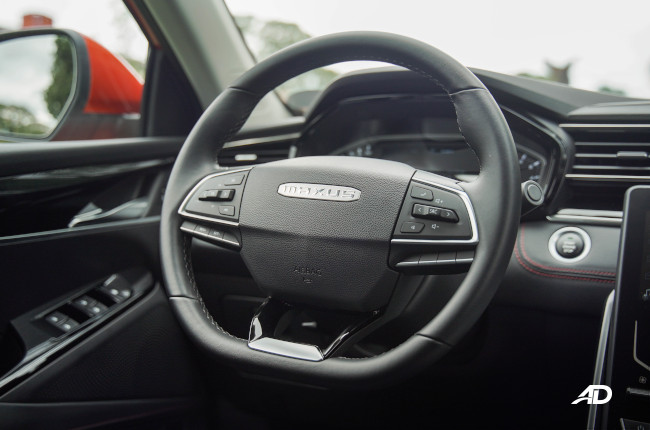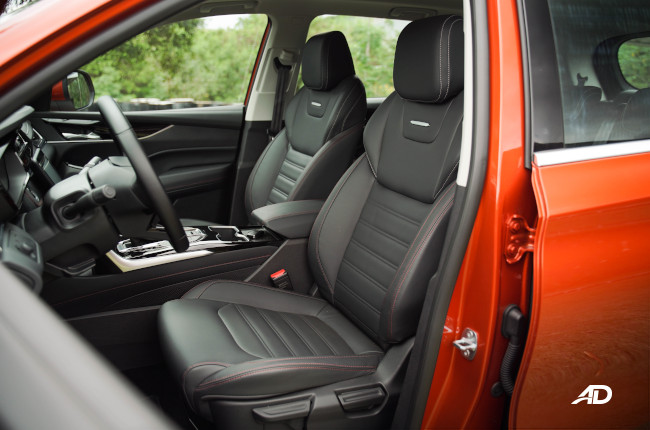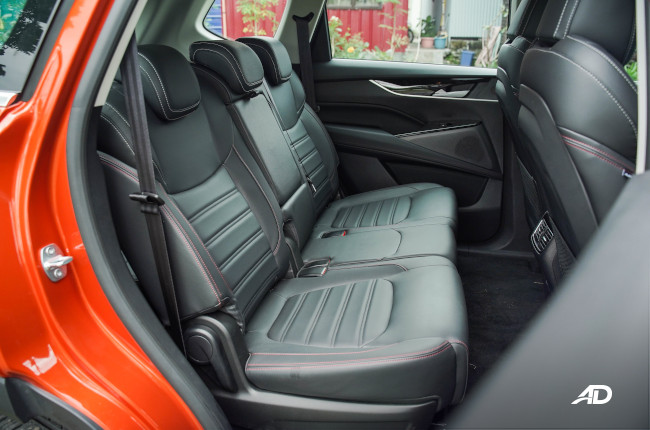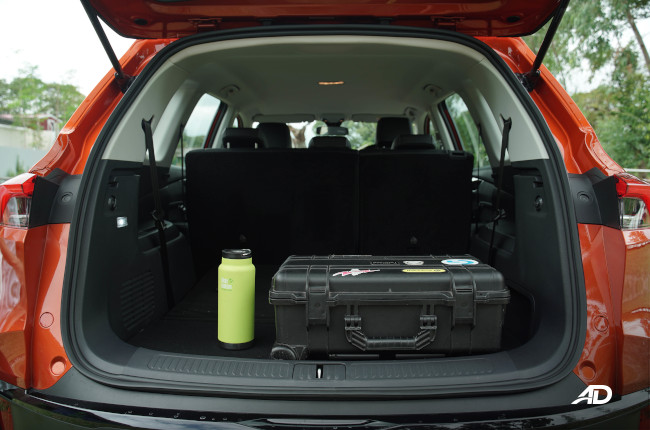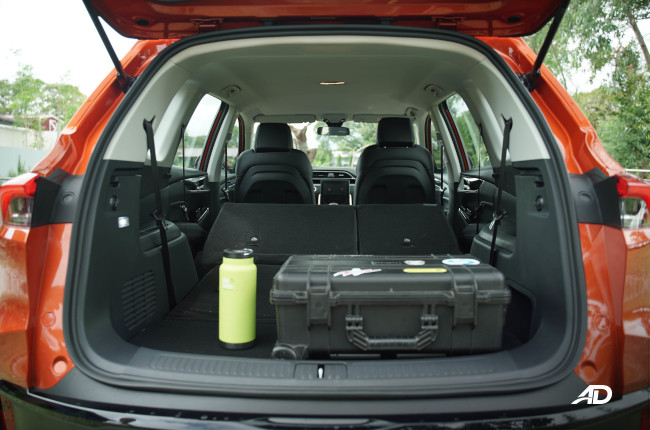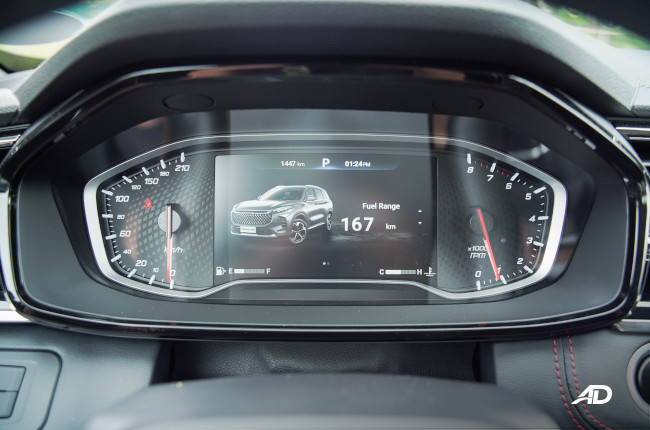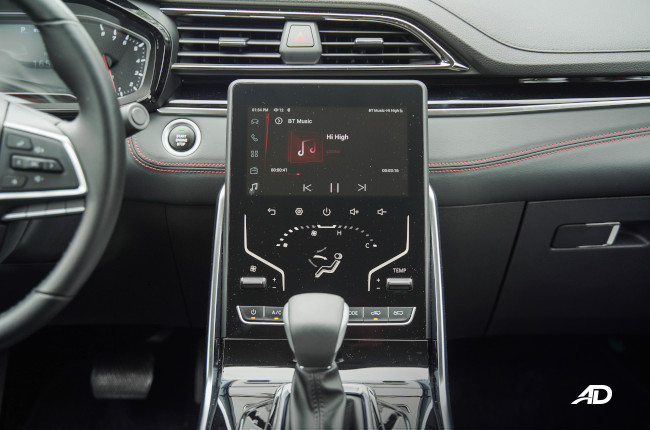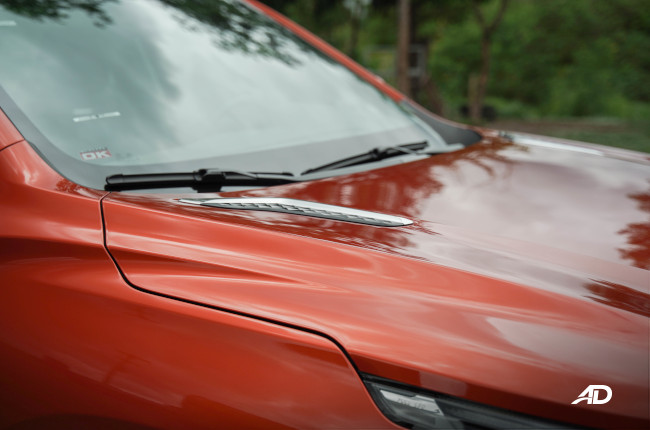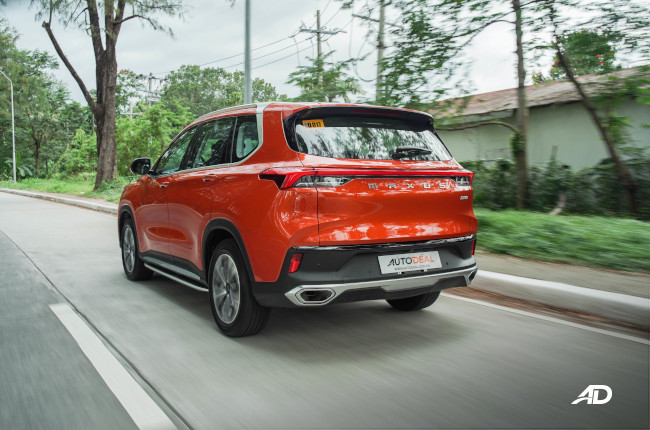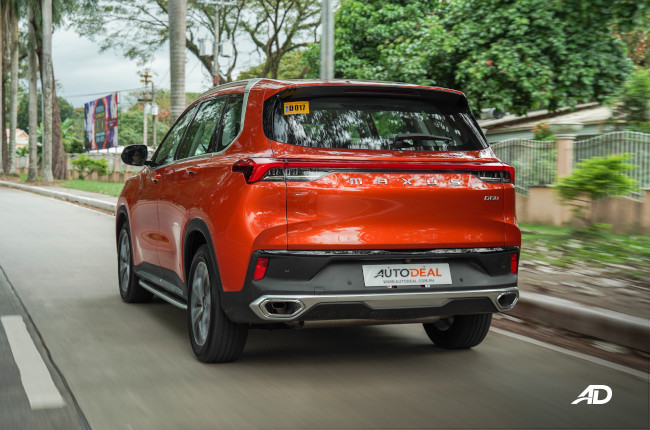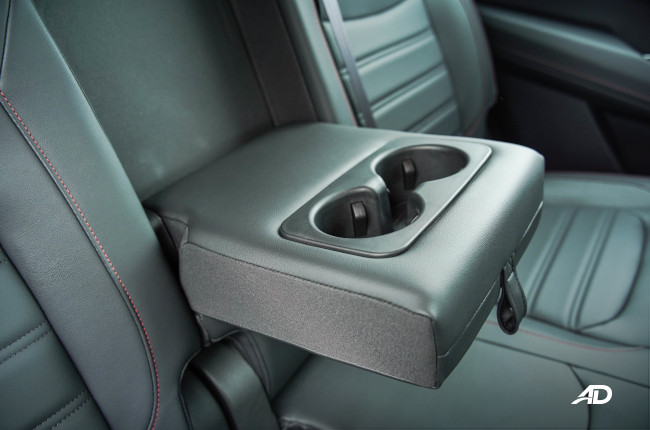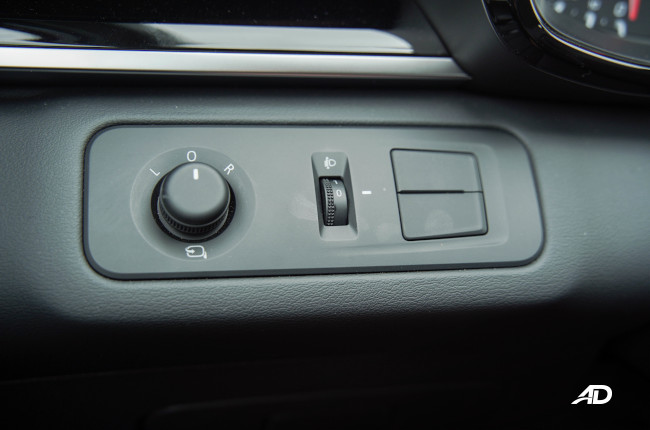
Contents
When you think of Maxus in the Philippines, the first models that may come to mind are their pickups and vans. The general image of the brand in the country leans towards rugged and dependable, which is all well and good, but what if a company like Maxus makes something more refined and elegant?
The result is the Maxus D60. A midsize crossover that can either be a 5- or 7-seater depending on how much you are willing to pay. For this review, we got to test out the 7-seater variant called the Maxus D60 Elite. Is it any good? Does it fit in Maxus’ lineup?
Engine Output (HP), Acceleration, Transmission, Handling 4.0/5
Exterior & Interior Design, Quality, Fit and Finish, Ergonomics 4.0/5
Cabin Comfort, Suspension, NVH Insulation 4.0/5
Convenience Technologies, Active and Passive Safety Features 3.5/5
Amount of the vehicle you get for the price, Fuel Efficiency 4.0/5
- Comfortable suspension and NVH
- Peppy 1.5-liter engine
- Good interior fit and finish
- Cramped 3rd row of seats
- Infotainment screen is blurry
- Touchpanel climate control
Exterior
We’ve said it in the video, and we’ll say it again in this review. The design is ironically unique. It’s not a copycat of any successful model on the market, but it has elements that we felt were inspired by existing cars, but given a certain twist to it when put together. For the D60, Maxus gave it a very striking appearance. The headlights have a very futuristic look, similar to Korean cars of similar sizing. Apart from that, the grille appears to be very unique, and somewhat inspired by a high-end Japanese marque.
Maxus D60 isn’t a total copycat, but it is a mix of very desirable elements from other manufacturers. Take the MG ZS, for example, its body lines and grille are reminiscent of some Mazda crossovers, but that didn’t stop it from being a best seller for 2019 and also in 2020.
Other notable elements on the car include a gorgeous rear tail lamp that sports a nice crystal-like texture, however, we have to admit that the placement of the trunk release button is a bit weird, as it is located in the rear wiper arm, and not in the cutout located at bottom of the door.
Interior
The D60 has, arguably, the best interior in the Maxus lineup at the time of this review. It’s the most elegant among all the models, and it’s pretty sedate as well. It does have a few quirks like the integrated infotainment and climate control in the center console of the dash. The D60 looks good while it’s turned off, but it doesn’t look that great in practice especially if the car is a bit dusty or when fingerprints are plastered all over. It’s a nice change of pace from the other models in the Maxus lineup like the T60, which exudes a more rugged and durable motif to its interior.
The upholstery gave us nothing to complain about. The experience of sitting in the middle-row seat of the Maxus is rather fair. You get quite a bit of space, which is enough to snuggly fit a 6-footer, however, the rear seats are a different story. Even our resident compact video host had a hard time fitting into the rear of the Maxus D60. This row of seats really is meant for smaller individuals, even with the middle row seats slid forward within reason.
Meanwhile, the cargo room is pretty good. While there are no official figures, we can estimate about 500 liters with the 3rd row down and over 1000 liters with the middle row folded. In practice, the space was pretty good, but getting the rear door open for first-timers is something to get used to. The button to release the latch on the 5th door is located in the base of the rear wiper, which could confuse first-time users.
Comfort
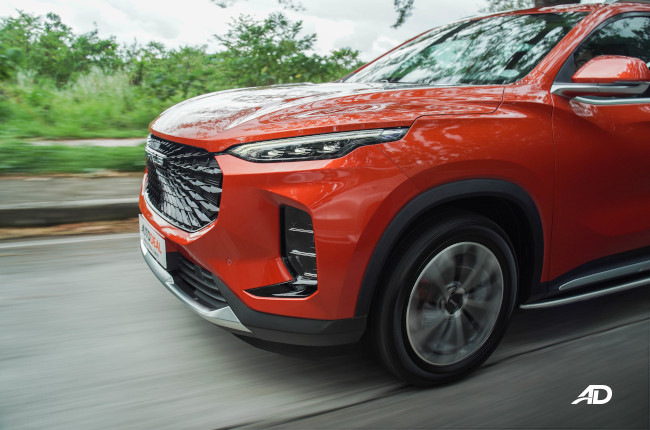
With its one-piece chassis, the Maxus D60 does well to soak up the bumps and potholes of Metro Manila and beyond. It has a fully-independent front and rear suspension which means that it rides smoothly over rough cement. Asphalt is no problem, but there is a noticeably weird sound that comes from the suspension components whenever we go over a speed hump quickly. We think that this could be something that’s unit-specific, not model-specific.
Road noise was drowned out quite well by the sound insulation, and the tires of the D60 are acceptably quiet. At higher speeds, we found that the crossover translates a bit of the wind noise into the cabin, but it’s nothing too worrisome or unsettling.
Technology and Safety
Reading the spec sheet, we know that the Maxus D60 is fairly well-equipped for its price point. In-person, however, the execution of the tech features in the D60 leaves something to be desired. The screen is sizable for 2021 coming in at 8 inches, but it’s recessed in a matte black panel, which makes the screen appear washed-out and devoid of color vibrance or clarity. You also won’t get Apple CarPlay and Android Auto out of the box, but you do get Mirror Link which is good to have if you know how to use it. Because the screen isn’t that clear, the backup camera quality suffered. It’s not unusable, but the quality of the sensor isn’t the greatest either. At night, you may experience some difficulty when trying to reverse without the aid of street lights.
On the flip side, the gauge cluster is quite clear. The TFT screen in the middle of the instrument panel displays a plethora of information like your fuel range, coolant temperature, and tire pressure among other things. The speedometer and the tachometer are analog. Some people prefer analog over a fully digital instrument cluster. It works well with the car and doesn’t look like an afterthought—two aspects that we value. The push-start system is a fine addition to the car as is the electronic parking brake with auto brake hold. Overall, it’s all you need, and less-particular individuals will find that the D60 is adequate for the price it asks. The only problem is that it’s not the most refined nor is it class-leading in its execution.
Safety

In terms of safety, the Maxus gets driver, passenger, and side airbags, stability control, electronic brake assist with hill-hold control, an engine immobilizer, and ISOFIX tethers, but the real star of the show in this aspect is the 5-star safety rating awarded by the China New Car Assessment Program (C-NCAP). At first, we thought that the D60 was going to do just alright in this area, but the model exceeds our expectations especially with its NCAP score, so hats off to Maxus.
Driving

We were a bit taken aback by how the D60 drives. We weren’t appalled or anything like that, but we were actually a bit impressed and somewhat floored. As we mentioned, the ride is pretty good and the suspension responds well over bumps. The steering is pretty light, but it does lack a bit of feel. The average driver won’t notice this, and it’s not a big deal for most people. The D60 performs adequately in the corners. There is not much sportiness baked into the chassis, which makes it more daily-driver material. Low-speed maneuvers are quite easy thanks to the light steering. The compact dimensions of the D60 also make it a cinch to pilot around tight corners and city streets. Backing into a parking slot or turning the wheel lock-to-lock is a breeze.

To preface our thoughts on the engine, we’ve tested a multitude of 1.5-liter turbocharged motors. From Geely’s 3-cylinder, Chery’s 4-cylinder, to Honda’s 4-cylinder, it looks like the 1.5-liter turbocharged motor is now the new norm for many compact cars. So where does this engine sit in the pecking order? For starters, and specs-wise, it comes with 168 hp and 250 Nm of torque mated to a 7-speed DCT. That sounds close to the specs of the Geely Coolray, but it doesn’t drive like it. Instead, it’s a little more sedate and a smidge smoother. We found that engine performance is pretty good paired with the chassis. It’s interesting to see that the 1.5-liter engine used in the D60 is the same as the one found in the G50. Maxus’ MPV was no slouch, but the crossover is fairly decent getting up to speed. It’s not mind-blowing, so don’t expect too much.

Perhaps the most lackluster part about the performance package of the car is the transmission. The DCT isn’t the most responsive, nor is it the smoothest we’ve tested. It has a tendency to hunt for gears or get confused after the accelerator has been pushed. It’s not like a headless chicken running around without a clue where to go and what to eat, but it does respond a bit slow and you might need to be more deliberate when operating the car. Of course, when you’re going at a continuous and constant speed, the transmission is a good performer. It’s really in heavy stop-and-go traffic situations that may cause the transmission to struggle ever so slightly.
Fuel Economy

Even with a turbocharger, we were able to get respectable figures out of the D60. In dense city traffic we were able to get 8 km/L, then 10 km/L once everything cleared up. Out on the highway, we were able to average 18 km/L. Don’t expect to join fuel economy runs where cars are tasked to do long distances on one tank of gas. Instead, expect that you won’t drill a deep hole into your wallet by simply driving this vehicle.
Verdict

Simply put, the D60 is surprising. We’ve said it on video, and we’ll say it here. The strongest aspects of the Maxus include its design, engine, handling, comfort, and safety. Even if the design elements are inspired by or from different manufacturers, the D60 stands out on its own. It’s a unique-looking automobile. With Maxus’ reputation for producing workhorses, you’d think that the D60 wouldn’t make the cut for us in terms of comfort, and yet, it does.
Coming in at P1,258,000 as tested, the 2021 Maxus D60 in its Elite trim is quite a bargain for a 7-seater. However, those looking to buy a D60 must consider that the rear seats aren’t very serviceable. You’d really have to squeeze in or convince someone to sit back there. The tech package may also seem good on paper, but we’re not fans of the execution. Infotainment and other creature comforts are where we feel that Maxus should improve upon—a few minor gripes, but nothing deal-breaking.
If you’re looking for a similarly priced and similarly-sized vehicle, there are other options such as the Geely Okavango and Chery Tiggo 8. There are also other models from other segments, but the D60 seems to be Maxus’ answer to the growing trend of affordable yet premium 7-seat crossover-MPVs. Also consider the Maxus G50 if you’re not looking to deviate from the brand. Priced at P1,288,000 for the top-spec Elite variant, the G50 is only P30,000 more expensive than the D60. You get 1 more seat and more space, though the looks and driving dynamics leave something to be desired.
Exterior Photo Gallery
Interior Photo Gallery
Specifications
Engine
1.5 LFuel Type
GasolinePerformance
167 hp @ 5,500 rpmTransmission
Automatic-
Summary
-
Name Maxus D60 1.5 AT Elite Body Type Crossover Price ₱1,338,000 Transmission Category Automatic -
Engine
-
Engine Size 1.5 L Displacement 1,490 cc Number of Cylinders 4 Number of Valves 16 Transmission Type 7-Speed Dual Clutch Transmission (DCT) -
Performance
-
Drivetrain Front-Wheel Drive Max Output (hp) 167 hp @ 5,500 rpm Max Torque (nm) 250 Nm @ 1,700 rpm -
Economy & Environment
-
Fuel Type Gasoline Emissions Standard n/a Fuel Capacity 50.0 L *Combined Fuel Consumption 13.1 km/L *brand manufacturer claim
-
Dimensions
-
Length 4,720 mm Width 1,860 mm Height 1,736 mm Wheelbase 2,760 mm Turning Circle n/a Ground Clearance 180 mm Trunk Capacity 500 L Number of Doors 5 Number of Seats 7 -
Safety & Security
-
Driver's Airbag 1 Front Passenger's Airbag 1 Side Airbag 2 Curtain Airbag Knee Airbag Auto Brake System Electronic Brake Distribution Anti-lock Brake System (ABS) Immobilizer Security Alarm Stability Control Electronic Door Locks Speed Sensing Door Locks ISOFIX Lane Departure Warning System Blind-Spot Detection System -
Features
-
Cruise Control Front Parking Sensors Rear Parking Sensors Leather Upholstery Push Start Button Wheel Size 18 in Wheels Metal Type Alloy Airconditioning System Manual Entertainment System 8-inch touchscreen with 6-speakers Connectivity USB and Bluetooth Navigation Ready Warranty 5 Years (100,000 km) Keyless Entry Roof Rack Sunroof Electric Adjustable Seats Power Steering Power Windows Power Outlet Steering Wheel Audio Control -
Technology
-
Active Park Assist Hill Start Assist AWD Modes n/a Tire Pressure Monitoring Heads-up Display Power Liftgate Start-stop System
Colors
Latest Review
-
2025 MG G50 Plus Lux DCT Review / Review
Can affordable price and VIP aspirations blend together? We find out in this review of the MG G50 Plus Lux DCT.
4.0 / 5 -
2025 BYD Seal 5 DM-i Premium Review / Review
We test-drove the BYD Seal 5 DM-i, and its features and affordable price make it a strong hybrid sedan contender.
4.2 / 5 -
Addictively excessive: The Ford Ranger Raptor Twin Turbo V6 / Review
The Ford Ranger Raptor Twin Turbo V6 is one crazy pickup truck. Wondering why? Just keep reading.
4.6 / 5
Popular Articles
-
Cheapest cars under P700,000 in the Philippines
Jerome Tresvalles · Sep 02, 2024
-
First car or next car, the Ford EcoSport is a tough package to beat
Jun 18, 2021
-
Car Maintenance checklist and guide – here’s everything you need to know
Earl Lee · Jan 12, 2021
-
Most fuel efficient family cars in the Philippines
Bryan Aaron Rivera · Nov 27, 2020
-
2021 Geely Okavango — Everything you need to know
Joey Deriquito · Nov 19, 2020
-
Family cars in the Philippines with the biggest trunks
Sep 20, 2023
-
Head to head: Toyota Rush vs. Suzuki XL7
Joey Deriquito · Oct 28, 2020
-
Why oil changes are important for your car
Earl Lee · Nov 10, 2020
-
2021 Kia Stonic — What you need to know about it
Joey Deriquito · Oct 16, 2020
-
Top 7 tips for buying a used car in the Philippines
Joey Deriquito · Nov 26, 2020




